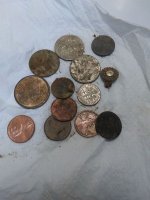Leonard F.
Jr. Member
I took a drive up to Clear Creek north of Golden, CO the other day to check some of the spots where I prospected last summer. Last summer was my introduction to gold prospecting, and I can't wait to get back at it this spring. Anyway, I was wondering if the winter ice cover affects gold deposits, and once the ice is gone should I be looking at those areas of interest any differently?
Upvote
0





